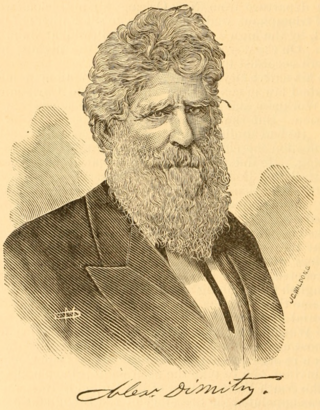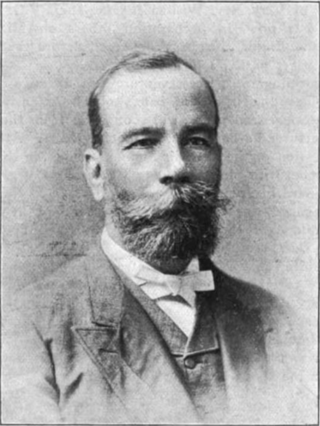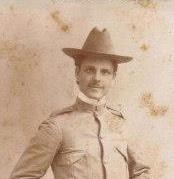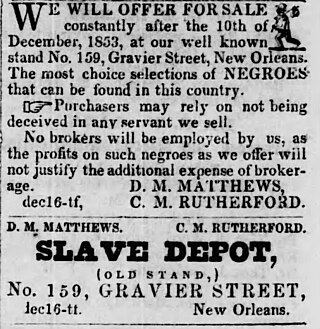
Louis Alfred Wiltz was an American politician from the state of Louisiana. He served as 29th Governor of Louisiana from 1880 to 1881 and before that time was mayor of New Orleans, lieutenant governor of Louisiana, and a member of the Louisiana House of Representatives.

The Crescent City Connection (CCC), formerly the Greater New Orleans (GNO) Bridge, is a pair of cantilever bridges that carry U.S. Highway 90 Business over the Mississippi River in New Orleans, Louisiana, United States. They are tied as the fifth-longest cantilever bridges in the world. Each span carries four general-use automobile lanes; additionally the westbound span has two reversible HOV lanes across the river.

Fair Grounds Race Course, often known as New Orleans Fair Grounds, is a thoroughbred racetrack and racino in New Orleans, Louisiana. It is operated by Churchill Downs Louisiana Horseracing Company, LLC.

New Orleans Union Passenger Terminal (NOUPT) is an intermodal facility in New Orleans, Louisiana, US. Located at 1001 Loyola Avenue, it is served by Amtrak, Greyhound Lines, Megabus, and NORTA with direct connections to the Rampart–St. Claude Streetcar Line.

Robert Carter Nicholas was a United States senator from Louisiana. He was a veteran of the War of 1812, and also served as Secretary of State of Louisiana and Louisiana's Superintendent of Education.

John Smith was a Virginia planter and politician who served in both houses of the Virginia General Assembly as well as the United States House of Representatives.
The Creoles of color are a historic ethnic group of Louisiana Creoles that developed in the former French and Spanish colonies of Louisiana, Mississippi, Alabama, and Northwestern Florida, in what is now the United States. French colonists in Louisiana first used the term "Creole" to refer to people born in the colony, rather than in Europe, thus drawing a distinction between Old-World Europeans and Africans from their descendants born in the New World. Today, many of these Creoles of color have assimilated into Black culture, while some chose to remain a separate yet inclusive subsection of the African American ethnic group.

Alexander Dimitry was a mixed race Louisiana Creole of partial Greek descent. He was the first state superintendent of public instruction in Louisiana, an author, diplomat, educator, journalist, lawyer, orator, and publicist. He spoke eleven languages. He was the first person of color to represent the United States as Ambassador to Costa Rica and Nicaragua. He was also one of the few people of color to serve in the bureaucracy of the Confederate Government. He was the first person of color to attend Georgetown University. Alexander's family passed as white and witnessed countless incidents of racism. Two major incidents involving his family were documented in court entitled Forstall, f.p.c. v. Dimitry (1833) and Pandelly v. Wiltz (1854). Throughout his entire life, Alexander underwent constant persecution and was always reminded of his skin color and ethnic background.

Pierre-Paul Pecquet du Bellet was an American attorney, author, and unofficial diplomatic agent of the Confederate States of America in France.
Mary Bushnell Williams was a Louisiana Creole American author, poet, and translator. She resided in Louisiana her entire life except for a brief period when she removed to Texas during the American Civil War. A pupil of Alexander Dimitry, her translations from different languages were admired, and her poems were held in high esteem. Besides poetry, she wrote sketches in prose.

Andrea Dimitry, also known as Andrea Drussakis Dimitry, was a Greek refugee who emigrated to New Orleans and became a merchant. He married Marianne Céleste Dragon, a Louisiana Creole woman of African, French, and Greek ancestry. He fought in the Battle of New Orleans with Major General and future President Andrew Jackson. His son is the author and educator Alexander Dimitry.

Marie Celeste Dragon (1777–1856) was a prominent Creole of color land owner during the Spanish Louisiana period, also known for her portrait by José Francisco Xavier de Salazar y Mendoza. She was the wife of Andrea Dimitry. They were an interracial couple. Dragon passed neither as black or white due to her mixed ancestry. She was of Greek-French and African descent.

Michel Dragon also known as Don Michael Dragon or Michael Dracos was a Greek merchant and lieutenant who served in the Spanish Army during the American Revolution, fighting with the Patriots for the independence of the United States of America. He participated in the Gulf Coast Campaign, notably in the Battle of Baton Rouge, Battle of Fort Charlotte and in the Siege of Pensacola where he was in command of the provincial militia. Dragon was one of the first Greek Americans and one of few to fight in the American Revolutionary War. He married a former slave of African descent and they had two children, one of them being Marianne Celeste Dragon. Both he and his daughter were the subjects of two different portraits by Josef de Salazar. He was also a businessman and major planter. Dragon and his wife Francoise Chauvin Beaulieu de Monpliaisir were major planters in New Orleans.

John Bull Smith Dimitry was a mixed race Creole American author, professor, and notable Confederate soldier. He is one of the few people of color venerated by the Confederacy. His father was mixed Creole Greek American author Alexander Dimitry and his grandmother was notable Creole socialite Marianne Celeste Dragon. John was a member of one of the oldest Creole families in New Orleans. He was selected to write the Confederate Military History around the same period as Plessy v. Ferguson. John wrote for several news publications and published several of his own books.

Charles Patton Dimitry was a mixed race Creole author, poet, journalist, inventor, and historian. He was the second son of Greek Creole author and diplomat Alexander Dimitry and also the grandson of Marianne Celeste Dragon. His catalog features a massive amount of literary publications one of his most notable works was The House in Balfour Street published in 1868. The author used two pseudonyms Tobias Guarnerius Jr. or Braddock Field his father Alexander used the pseudonym Tobias Guarnerius in some of his works. Charles worked for newspaper publications across the country including New Orleans, New York City, and Washington DC.

Shadrack Fluellen Slatter, usually listed as S. F. Slatter in advertisements and often called Col. Slatter in later life, was a 19th-century American slave trader and capitalist. In the 1830s and 1840s he was part of the coastwise slave trade in partnership with his older brother Hope H. Slatter, who bought slaves in Baltimore for S. F. Slatter to sell at New Orleans. It was typical for interstate traders like the Slatters to have a buying location in the Upper South and a selling location in the Lower South. After quitting the retail slave trade, he was a real estate developer and landlord in New Orleans. In the late 1850s he was heavily involved in promoting and funding the freelance invasion of Nicaragua by William Walker. Fort Slatter in Nicaragua was named in Slatter's honor.

Ernest Lagarde was a mixed race Creole author, journalist, professor, publisher, and linguist. He spoke many languages including Greek, following his Greek-American heritage. Lagarde was a member of the prominent Creole Dimitry family of New Orleans. The family was involved in a large number of controversial incidents that involved racism. He was a faculty member at Mount St. Mary's University for over 45 years. He served as chairman of the university's Department of Modern Languages and Literature. Lagarde worked for several newspapers and also wrote several scholarly books, including one on William Shakespeare entitled Shakespeare A Lecture. He started a newspaper for Mount Saint Mary's College called The Mountain Echo.

Theodore John Dimitry Jr. was a Creole physician, optometrist, professor, author and inventor. He was a pioneer in the field of optometry responsible for developing the Dimitry Erisiphake and a plastic eye made of lucite to permit motion. Theodore's vast contribution to the field of optometry also included the publication of hundreds of articles in different medical journals. He was a member of one of the oldest Creole families in New Orleans known as the Dimitry Family. His great-grandmother was Marianne Celeste Dragon.

Calvin Morgan Rutherford, generally known as C. M. Rutherford, was a 19th-century American interstate slave trader. Rutherford had a wide geographic reach, trading nationwide from the Old Dominion of Virginia to as far west as Texas. Rutherford had ties to former Franklin & Armfield associates, worked in Kentucky for several years, advertised to markets throughout Louisiana and Mississippi, and was a major figure in the New Orleans slave trade for at least 20 years. Rutherford also invested his money in steamboats and hotels.


















